
Jupiter

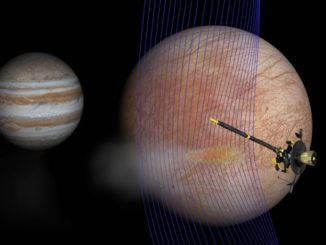
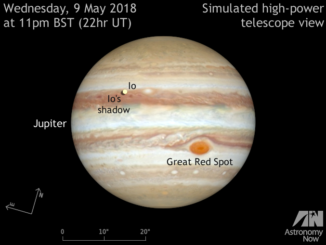
Jupiter’s 9 May opposition and a month of Jovian events visible from the UK
With the opposition of Jupiter occurring on 9 May, now is the time to ensure that your telescope is clean and collimated (aligned) to deliver the sharpest images of the solar system’s largest planet at its best. We tell you when and how to view Jupiter’s Great Red Spot and a wealth of Galilean moon phenomena throughout May 2018.
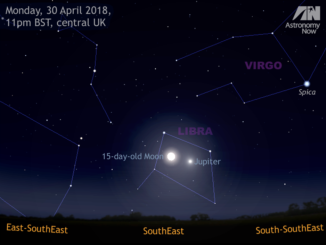
See the Moon get close to prime-time Jupiter on 30 April
Observers in Western Europe looking at the rising full Moon low in the southeast on the night of Monday, 30 April will also see conspicuous planet Jupiter close by, the pair fitting comfortably within the field of view of typical binoculars. Jupiter is close to opposition (9 May) and we show you how to identify its four main moons.
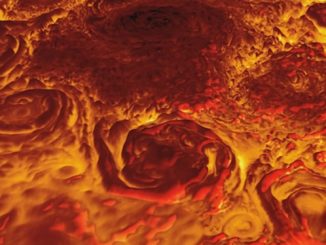

Jupiter’s red spot might be shrinking, but it’s still great!
The Juno probe’s public-outreach camera routinely captures stunning views of Jupiter cloudtops and storms, including the Great Red Spot, seen here in an image processed by graphic artist Seán Doran. The GRS has been shrinking for years, but it remains easily the largest storm in the solar system and one still worthy of its name.
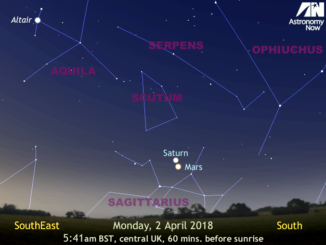
See the Red Planet, Saturn and Moon get close in the dawn sky
Early risers will already be aware that there’s currently a lot of planetary activity in the morning sky, but at dawn in Western Europe on Monday, 2 April, Mars and Saturn will be just 1¼ degrees apart and seen in the same field of view of telescopes at 30x magnification. The waning Moon is close by on the mornings of 7 & 8 April too.
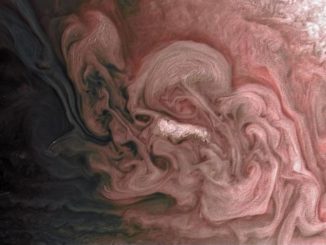
A big storm, by definition, on mighty Jupiter
Citizen scientists process a stunning image of a giant storm in Jupiter’s northern hemisphere taken by NASA’s Juno spacecraft during its 11th close flyby of the giant planet. Bright cloud tops look similar to storm clouds on Earth, although the scale is vastly larger. Juno is giving planetary scientists a unique view of Jupiter from the spacecraft’s polar orbit.
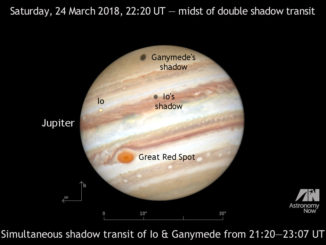
Get ready for multiple shadow transits of Jupiter’s Galilean moons
Jupiter, the solar system’s largest planet, is now visible low in the southeast three hours after darkness falls in the UK. Now’s the time to dust off your telescope, check its optical alignment and hone your Jovian observing skills – particularly since a series of double shadow transits of the planet’s large Galilean moons starts on 24 March 2018.

